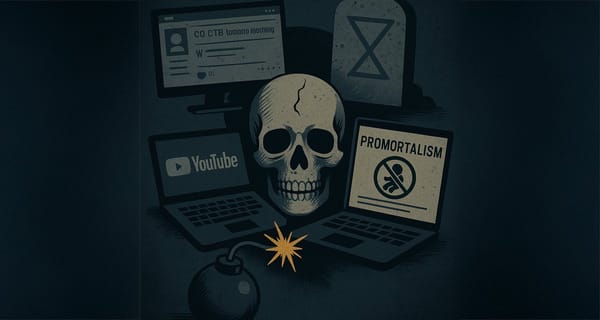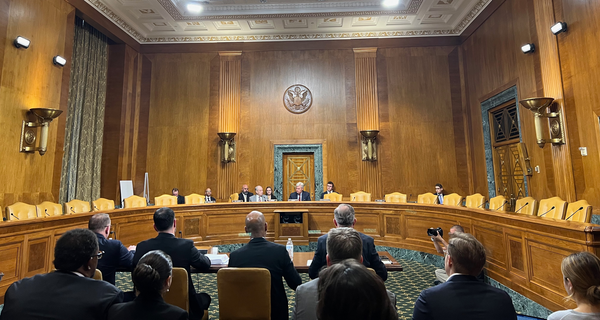The Implications of Child Sex Dolls
The absence of clear policies and lack of criminalization in the production, distribution, and use of child sexual abuse materials has led to the creation and distribution of products that facilitate sexual encounters with children as proxy victims.

Summary
In the United States, explicit, graphic, and gratuitous sex has become commonplace in popular culture and personal communication. It has led to the portrayal of children and adolescents in highly sexualized ways. The absence of clear policies and lack of criminalization in the production, distribution, and use of child sexual abuse materials has led to the creation and distribution of products that facilitate sexual encounters with children as proxy victims.
Child sex dolls are life-sized, anatomically correct dolls that are made to look like infants, toddlers, and children. They are designed with primary and secondary sex characteristics that can be tailored to fit personal preferences in victim-type and are made to resemble real children. Child sex dolls market non-consensual sex as a commercial product and facilitate encounters where children are viewed as a commodity.
This paper explores manufacturing and purchasing of child sex dolls, implications in child sexual abuse, theories in cognitive distortion, pro-pedophilia sentiment, and prospects for a general ban.
Manufactures & Consumers Of Child Sex Dolls
According to the American Psychological Association, infantophilia, a type of pedophilia also referred to as nepiophilia, is the sexual interest in and arousal by infants. The person with nepiophilia generally does not find adults, or sometimes even older children sexually arousing and their predilection is strictly focused on very young children.
The purchasing of child sex dolls signals a market demand that caters to consumers who can customize dolls down to the smallest detail, and import them from abroad.
Child sex dolls are manufactured by a transnational industry found in overseas markets such as, Japan, China, and Hong Kong, where dolls are shipped to customers around the globe. Manufacturers tailor physical criteria, such as: skin, hair color, eye color, weight, and body shape to make them look and feel as realistic as possible.
Potential Harms & The Link To Child Sexual Abuse
When child sexual offenders are arrested, law enforcement often finds and seizes collections of child sexual abuse materials (CSAM) (Palermo & Farkas 2013). CSAM may include images, videos, and stories of graphic and lewd depictions of child sexual abuse. Child pornography cannot be produced without a child being sexually abused. Roos (2014) noted that such material actively encourages the sexualization of children by creating a market that validates sexual gratification through its use, eroticizing the child’s defensiveness and encouraging the use of children for sexual satisfaction. Roos research suggests that child pornography markets promote the objectification of children as a sexual commodity, and harm is derived from the repeated viewing of child sexual abuse materials. Whether it is a real child, or a virtual child, society should establish a protective attitude towards its children, future generations, and their well-being.
For a pedophile, child sexual abuse materials bridge a gap between fantasy and reality. It not only gives vision to the fantasy, it also fuels it, and similar to operant conditioning, imparts a compulsion to act. When child sexual abuse materials fail to provide the emotional and cognitive needs of the pedophile, distorted behavior escalates.
Escalation in relation to pornographic materials is well documented (Maras & Shapiro 2017; Schell et al. 2006). In a paper written for the Australian Institute of Criminology, Brown and Shelling note:
“From reviewing the cases of 136 online child sexual offenders in Australia, Davis, Lennings and Green (2018) concluded that the preference for more extreme material increases as the medium moves from photographic to video.” Offenders who viewed only photographic CEM images were less likely to have a preference for more graphic and explicit images (as graded by the Combating Paedophile Information Networks in Europe, or COPINE, Scale) than those who viewed video content. Houtepen, Sijtsema and Bogaerts (2014) noted that heightened online engagement can lead to a need for more extreme material to reach satisfaction.”
Brown and Shelling say, “This can fuel a gradual escalation in use and increase further demand for similar materials, leading to greater abuse in children in the production of material to meet this demand” (Parliament of the Commonwealth of Australia 2004:6).
Michael Bourke, Ph.D. for the United States Marshals Service, who has worked with sex offenders for a decade in the federal prison system, says this about using dolls as substitutes for real child victims:
“These dolls make the sexual fantasies of pedophiles more real. And making their fantasies more real is precisely what we want to avoid.”
Bourke’s findings include that non-contact child pornography offenders frequently had committed child sexual abuse (Bourke & Hernandez 2009).
Those who investigate sex crimes and missing persons, know what they are up against.
Cognitive Distortion Theory
Cognitive distortion as it pertains to child exploitation materials is a crucial concept of sex offending. This idea was first established in the work of Abel, Becker, and Cunningham-Rathner (1984) who argued that child sexual abuse is regarded socially as something so heinous that offenders cognitively adapt in order to justify and excuse their offending.
Distorted cognitions may derive from child sex doll use, where sexual abuse by proxy desensitizes the abuser. Howitt and Sheldon (2007) found that child sexual abuse material offenders were more likely than contact child sexual offenders to view children as sexual beings. This feeds into a fantasy perception, a reinforcement, that departs from the reality of child sexual abuse. The fantasy of sexual abuse is supported by the lack of negative feedback received from a doll. In return, a reinforcing effect on pedophilic ideation is acted upon with greater urgency (Kingston et al. 2008).
Maras and Shapiro (2017) note that dolls, “fail to provide pedophiles with accurate emotional feedback from aggressive actions, particularly ones that would result in emotional and physical damage if performed on a real child.” Dolls offer no emotional feedback or, in the case of robotic models, only positive responses (Maras & Shapiro 2017).
The fostering of negative attitudes towards children makes it easier to offend. As O’Donnell and Milner (2007) observe, “child pornography cannot be produced without a child being sexually abused”. CSAM encourages the “sexualization of children by creating a market that validates sexual gratification through its use, eroticizing the child’s defensiveness and encouraging the use of children for sexual satisfaction.”
Child sex dolls desensitize the act of child sexual abuse, reinforcing rather than reducing urges, associated thoughts, and behaviors. This is the danger in fantasy enactment, as it pertains to cognitive distortion. The pedophile rehearses the act of child sexual abuse and is subsequently rewarded through sexual gratification.
Pro-Pedophilia Sentiments
Pro-pedophilia organizations and child sex doll manufacturers claim that child sex dolls have a therapeutic effect which may even deter offending by pedophiles.
Michael Seto, a psychiatrist from the University of Toronto speculated on an analogy to methadone treatment for opioid addicts. Seto hypothesized that “for some pedophiles, access to artificial child pornography or to child sex dolls could be a safer outlet for their sexual urges, reducing the likelihood that they would seek out child pornography or sex with real children. For others, having these substitutes might only aggravate their sense of frustration” (Morin 2016).
James Cantor, a Canadian psychologist and neuroscientist, believes that prohibiting the use of child sex dolls amounts to “blocking the harmless ways of masturbating,” which may leave sex offenders more desperate and likely to offend. Cantor, like Seto, offers pro-pedophilia sentiment in support of pedophilia as a sexual orientation that may be outside the control of the individual. Cantor posits, that “child molestation is a horrible crime”, but says, “experiencing sexual attraction that one cannot help is ethically neutral”.
While empirical data on the outcomes of child-sex-doll use does not exist, it is difficult to imagine how research of this nature could ever be conducted in an ethical way. Academic arguments in support of child sex dolls are unconvincing and are open to being hijacked by pro-pedophilia interest groups (Roper 2019).
One such group is an agency called Prostasia, which works with pedophiles but is registered as a child protection charity. A newsletter from the Prostasia Foundation says:
“Michael Seto is written with you in mind. It summarizes the state of research in a number of scientific disciplines that relate to this stigmatized topic, and doesn’t assume any advanced scientific knowledge.” The newsletter points pedophiles to a peer-to-peer support group, MAP Support Club, a chatroom for pedophiles and children as young as 13 years-of-age (Malcolm 2021).
In Prostasia’s view, the lack of advanced research is welcome in their space, and in a way, they hide behind this advantage.
In pedophilia studies, samples available are usually of those who have offended. These studies show a reinforcing effect when it comes to paraphilia. Behaviors trigger other behaviors, and it incentivizes offenders to act. Studies that show favorable outcomes for recidivism with offenders who consume child sexual abuse materials are working on assumptions and assertions from pedophiles who claim they have never acted on impulses. Many pedophiles do not seek help until they commit a crime and fall into the law enforcement system.
Finally, there is a risk that child-like dolls could be used to groom children for sex, in the same way that adult sex dolls have already been used. There is no evidence that child sex dolls have a therapeutic benefit in preventing child sexual abuse, and instead, promotes a continuum of behavior that may likely result in physical contact with a child.
Policy: Prospects For General Bans On Child Sex Dolls
The relationship between sex and the law is long and complex, and arguments within the same laws can sometimes make a case for or against child sex dolls. The interaction of sex and law exists at two levels – the formal level at which laws are enacted, and the more practical level at which laws are implemented and enforced (Posner, 1992 ).
Child sex dolls are only illegal in a handful of States: Tennessee, Kentucky, Hawaii, and Florida, where offenders are prosecuted for possessing and/or importing child sex dolls.
A bill introduced as H.R.73 - 117th Congress (2021-2022): Curbing Realistic Exploitative Electronic Pedophilic Robots Act 2.0 establishes new criminal offenses for conduct involving child sex dolls, was referred to the Subcommittee on Crime, Terrorism, and Homeland Security.
The U.S. Supreme Court held in 1973 in Miller v. California (1973 , pp. 23–26) that states could restrict “obscene materials” if they, “taken as a whole, appeal to the prurient interest in sex, portray sexual conduct in a patently offensive way, and do not have serious literary, artistic, political or scientific value.”
Simmons ( 2016 ) advocates preemptive moral legislation to ban sex robots outright, the same way some states ban certain types of sex toys, such as, Alabama’s Anti-Obscenity Enforcement Act of 1998. This law was upheld by the Eleventh circuit Circuit under the U.S. Constitution in 2004 and is still upheld as a morality law. However, not all courts uphold the constitutionality of bans on sex toys and doing so may be limited to conservative states.
Protect Act Of 2003
“The possession, as well as the receipt, distribution and production, of obscene virtual representations of children engaging in sexually explicit conduct,” is prohibited under the PROTECT Act of 2003.
Can child Sex Dolls and robots similarly fall under this Act? Maras and Shapiro (2017) write:
“The Congressional response to the decision in Ashcroft v. Free Speech Coalition was the drafting and passage of the PROTECT Act of 2003. This Act amended the definition of “child pornography” in 18 U.S.C. § 2256(8) to include “a digital image, computer image, or computer-generated image that is, or is indistinguishable from, that of a minor engaging in sexually explicit conduct (section 501, Protect Act, 2003)”. The requirement that the prosecution show that an actual child was used in the production of virtual child pornography was relaxed by the court after the passage of the PROTECT Act of 2003.141.”
Child Pornography Prevention Act Of 1996
In Journal of Internet Law, Maras and Shapiro describe how laws against child sex dolls can be strengthened. One suggestion is classifying them as virtual child pornography defined by the Child Pornography Prevention Act (CPPA) of 1996 as:
“any visual depiction, including any photograph, film, video, picture, or computer, or computer-generated image or picture, whether made or produced by electronic, mechanical, or other means, of sexually explicit conduct, where … such visual depiction is, or appears to be, of a minor engaging in sexually explicit conduct … or … such visual depiction is advertised, promoted, presented, described, or distributed in such a manner that conveys the impression that the material is or contains a visual depiction of a minor engaging in sexually explicit conduct.”
In the Journal of Internet Law, Maras and Shapiro explain, “The phrases “appears to be” and “conveys the impression” enables the criminalization of content and objects that do not involve real children.”
The Supreme Court struck down CPPA in 2002 in Ashcroft v. Free Speech Coalition as a violation of the First Amendment for being too broad, however, its context is useful for future laws.
We can also look to laws abroad, countries such as the UK, New Zealand, and Australia who determined that child sex dolls are obscene The United States should follow suit in prohibiting child sex dolls outright by law.
References
Abel, G. G., Becker, J. V., & Cunningham-Rathner, J. (1984). Complications, consent, and cognitions in sex between children and adults. International journal of law and psychiatry, 7(1), 89–103.
Ashcroft v. Free Speech Coalition, 535 U.S. 234 (2002)
Brown R & Shelling J 2019. Exploring the implications of child sex dolls. Trends & issues in crime and criminal justice no. 570. Canberra: Australian Institute of Criminology.
Davis N, Lennings C & Green T 2018. Improving practice in child sexual abuse image investigations through identification of offender characteristics. Sexual Abuse in Australia and New Zealand Jan: 1–12
Houtepen JABM, Sijtsema JJ & Bogaerts S 2014. From child pornography offending to child sexual abuse: A review of child pornography offender characteristics and risks for cross-over. Aggression and Violent Behaviour 19(5): 466–473
Howitt D & Sheldon K 2007. The role of cognitive distortions in paedophilic offending: Internet and contact offenders compared. Psychology, Crime & Law 13(5): 469–486
H.R.73 - 117th Congress (2021-2022): Curbing Realistic Exploitative Electronic Pedophilic Robots Act 2.0. (2021, March 1).
Kingston, D. A., Fedoroff, P., Firestone, P., Curry, S., & Bradford, J. M. (2008). Pornography use and sexual aggression: the impact of frequency and type of pornography use on recidivism among sexual offenders. Aggressive behavior, 34(4), 341–351.
Malcolm, Jeremy. (2021). From The Newsletter: Michael Seto’s Pedophilia and Sexual Offending Against Children.
Maras, M.-H. and Shapiro, L. R. (2017). Child Sex Dolls and Robots: More Than Just an Uncanny Valley. Journal of Internet Law,21(6), 3-21.
Michael L. Bourke & Andres E. Hernandez (2009). The “Butner Study” Redux: A Report of the Incidence of Hands-on Child Victimization by Child Pornography Offenders, 24 J. FAM. VIOLENCE 183, 187-88.
Miller v. California (1973). 413 U.S. 15-48. U.S. Supreme Court.
Morin, Roc (2016). Can Child Dolls Keep Pedophiles from Offending? The Atlantic.
O’Donnell I, Milner C. Child Pornography : Crime, Computers and Society. Willan Publishing; 2007.
Palermo, Farkas, M. A., & Ebooks Corporation. (2013). The dilemma of the sexual offender (2nd ed.). Charles C Thomas.
Posner, R.A. (1992). Sex and Reason. Cambridge, MA: Harvard University Press.
Section 502 of the Protect Act of 2003.
Roos, H. (2014). Trading the sexual child: Child pornography and the commodification of children in society. Texas Journal of Women and the Law, 23, 131.
Roper, Caitlin (2019). Better A Robot Than A Real Child: The Spurious Logic Used To Justify Child Sex Dolls. Arena Magazine. No. 163.
Simmons, T.E. (2016). Sexbots; an obloquy. Wisconsin Law Review, 2016(1), 45–53.




